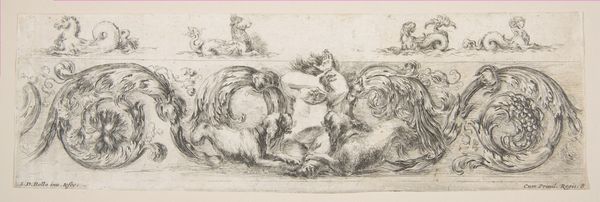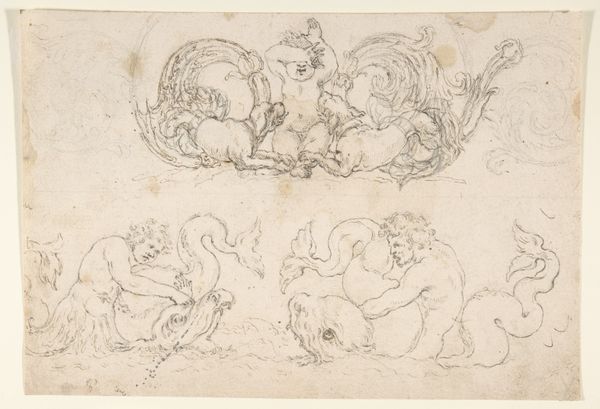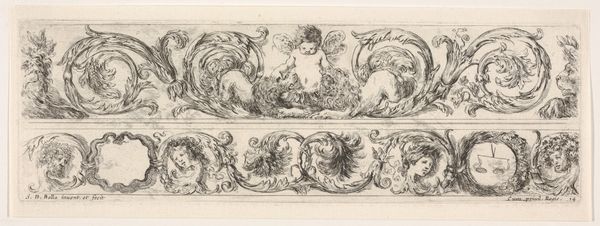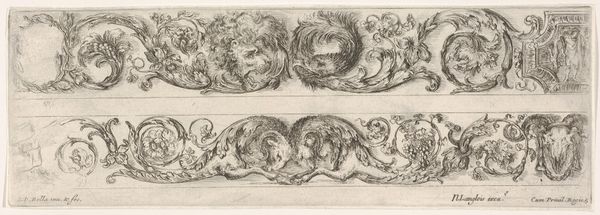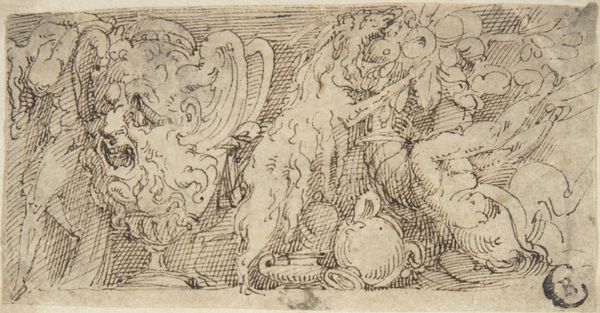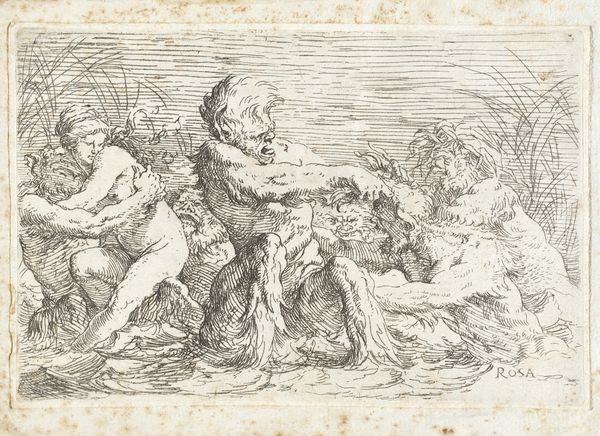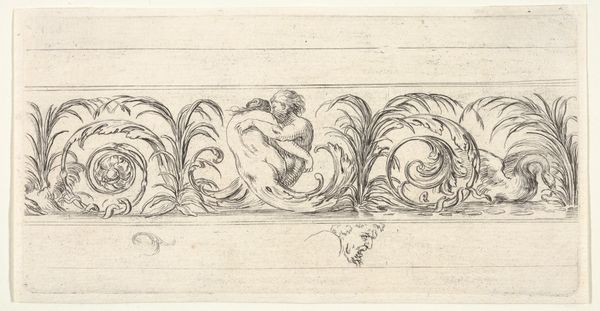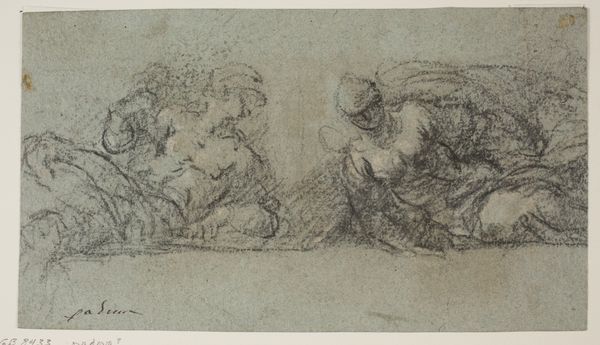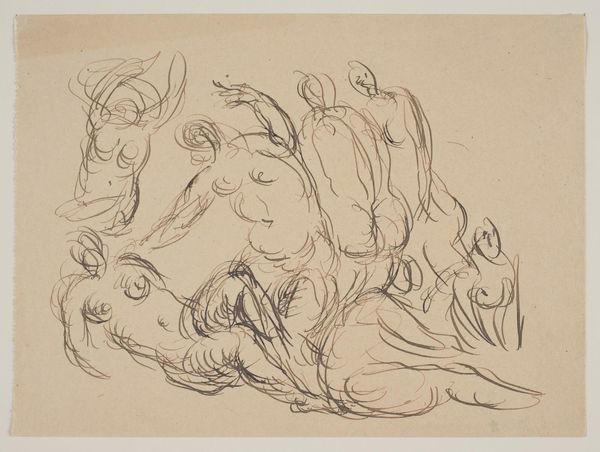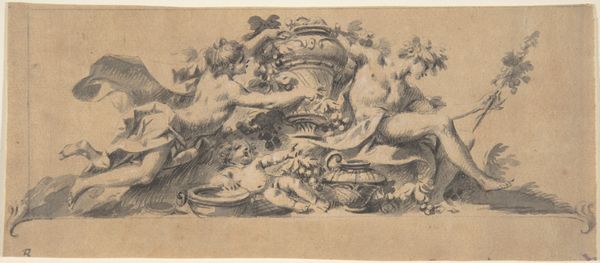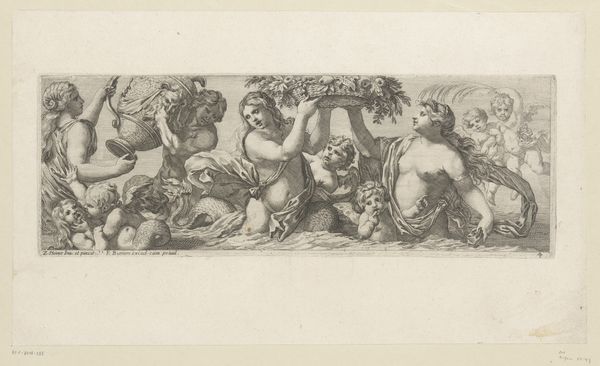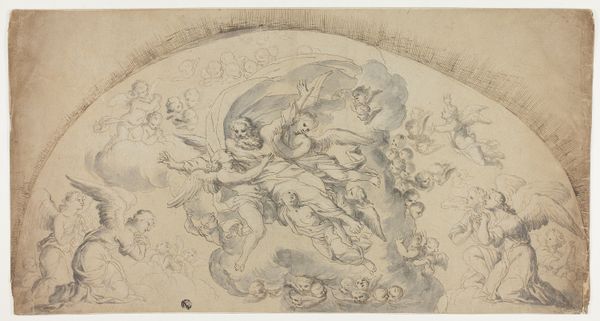
Design for a Frieze with Acanthus Scrolls and Playing Putti and Dogs, Plate 12 from: 'Decorative friezes and foliage' (Ornamenti di fregi e fogliami) 1645 - 1650
0:00
0:00
drawing, ornament, print, engraving
#
drawing
#
ornament
#
ink drawing
#
baroque
#
pen drawing
# print
#
pen sketch
#
dog
#
figuration
#
academic-art
#
engraving
Dimensions: Sheet: 3 5/8 × 10 1/4 in. (9.2 × 26.1 cm)
Copyright: Public Domain
Editor: This is Stefano della Bella's "Design for a Frieze with Acanthus Scrolls and Playing Putti and Dogs," made between 1645 and 1650 using engraving. The ink strokes create such a fluid sense of motion, almost like the frieze itself is breathing. How do you interpret the symbolism at play here? Curator: Consider the acanthus leaves. They’ve been used since antiquity, think of Greek and Roman architecture. Why do you suppose they recur here, in Baroque design? The acanthus represents endurance, immortality, a reaching towards the heavens, literally translated through its widespread ornamental presence over centuries, each time re-purposed within new contexts. Notice how the putti, too, partake in this immortality; do you see how they represent innocence, love, playful abandon even amidst architectural structure? Editor: That's fascinating, the idea of these symbols evolving! So the putti aren't just decorative; they carry that weight of innocence you mentioned. And what about the dogs? Do they play into the same symbolic language? Curator: The dogs further amplify the themes of loyalty, companionship, and even protection, all nestled within the architectural framework, acting almost as guardians or companions to the putti. So the combination speaks of idealized domesticity, and these are intertwined with larger cultural aspirations of an enduring and perhaps divinely blessed legacy. Can you imagine where something like this would have been placed? Editor: Perhaps adorning a wealthy family's home, showing their own enduring legacy. I never thought of ornamentation carrying so much meaning. Curator: Exactly. Ornamentation wasn’t *just* decoration; it communicated very specific cultural values that would last beyond their time. So seeing it through the lens of visual vocabulary really brings it to life!
Comments
No comments
Be the first to comment and join the conversation on the ultimate creative platform.
